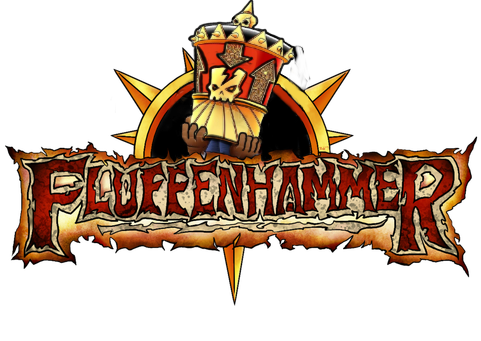Sunday Musings - Gorkamorka: the Rise and Fall
Gorkamorka is a legend inside the tabletop community, a riotous ruckus of a game with a current living rulebook, multiple sites and Facebook groups that both keep the Waaaagh! alive and evolve it to fit modern sensibilities. Modulorka exists purely because that demand is there to be filled.
Gorkamorka is loved. But Gorkamorka is also remembered as an absolute failure, and died within six to eight months after release. It's also one of the most important parts of Games Workshop's history as they transitioned into a post millennium market.
Rick Priestly and Andy Chambers built up on the bones of Necromunda to create a narrative heavy, campaign based game that was equal parts punk rock anarchy and crunchy complicated rulesets. I say that, but oddly, there was a lightness to the rules that gave it a easy to learn but very hard to master feel. It redesigned the Orks into the Kunningly Brutal and and Brutally Kunning aesthetic that they still have to this day, as each Gang battles to collect Scrap to take back to their settlement. Much like Necromunda, Gorkamorka was built out of the DNA of Warhammer 40k 2nd edition with gloriously 90's statlines and vehicle hit locations with half-tracks, buggies and Boyz all pounding the green out of each other. However, unlike it's parents, there was no limit to what anything could look like. With Gorkamorka having the rules that a vehicle could carry as many Orks as could physically fit onto the machine, people went wild with long rigs or multi-story tower trukks to get more moving. The sky was the limit as long it could be clearly defined if the vehicle was a Trukk or a Trakk, as one was faster and the other more stable. It was a opening of the modelling gates that had not been seen in a decade since the Rogue Trader deodorant tank. Anything could go, and away it went. I used to play against someone who had a Rebel Grot army that rode converted Epic Titans like horses.
The box released at the £40 mark, with brand new sprues and sculpts for the Orks and two full gangs to play out of the box. Whilst the plastics have been largely forgotten nowadays, the metal sculpts that were released alongside became instant classics, and still have a place in many Ork forces to this day, with Brian Nelson and Colin Dixon both bringing the a-game in transforming the Greenskins into lumbering hulking beasts, and in the case of the Grots, a sneaky characterful character that in many cases has yet to be bettered.
Alongside these miniatures came the Fort, a cardboard creation that stands as one of the best of the cardstock releases from 90s GW, with tents in the expansion and White Dwarf releasing a Watchtower. The plastic scatter terrain from Gorkamorka lived a long life, and was still kicking about during 7th Ed 40k!
Flashing forward to February 1998 we have the Digganob drop, written by Gav Thrope in one of his first full releases. Digganob brought out the Muties, Diggas as well the start of the Rebel Grots and the Red Gobbo. We also got sneaks and peaks at the Necrons, who had begun to slink of the shadows in the early part of 1998. Digganob is often considered the best expansion for a game from throughout Games Workshop's history, as it added so much without removing anything that worked. It took the simplicity of Gorkamorka and added those new gangs, random rolls in the campaigns and a whole shedload of scenarios. It was a colossus of a game, and a pinnacle of what the Warhammer Studio were capable of doing.
Christmas of 1997 is a Ork-filled festive season. White Dwarf renames itself White Ork for a single issue, with the next few months being packed to the Choppa with Gorkamorka content, ranging from battle reports to conversions by way of new scenarios and scenery building. Adrian Wood's tenure in White Dwarf is possibly synonymous with the rise of Ork content (orkontent?) as quite often the pages were filled with the Grand Warlord's work. The Mail Order trolls pilled up conversion fodder for the reader to peruse with a wave of enthusiastic clamour in both the magazine and the audience. Gorkamorka was front and centre in the stores with a heavy showing of demo games and building days. Diggnob dropped into the hands of a eager audience and then, suddenly, all went quiet. Three issues of White Dwarf after Digganob was released, outside of an advert and a d66 random table, Gorkamorka came to an end as a supported game. Gorkamorka gained a collected book named "Gubbinz" in 1999 but very little in the way of Fanatic Press support.
Gorkamorka was a fever dream of a release, something that both did extremely well but also a failure in the eyes of those who made it. It stands in a strange place between the absolute crash of Epic 4000, and the smashing sucess of Necromunda. It was never meant to be more than a Christmas 1997 release, with everything built either planned to be reused in mainline 40k, or a disposable commodity. it feels like more like something that crashed and burned because we, the kids and teens who feel in love with it felt it was mainline, that it was something with a long life ahead of it. Off the back of Necromunda or Warhammer Quest, Gorkamorka's model seems less jarring, but on it's own merits it absolutely feels like a wasted opportunity, and something that deserved more.




